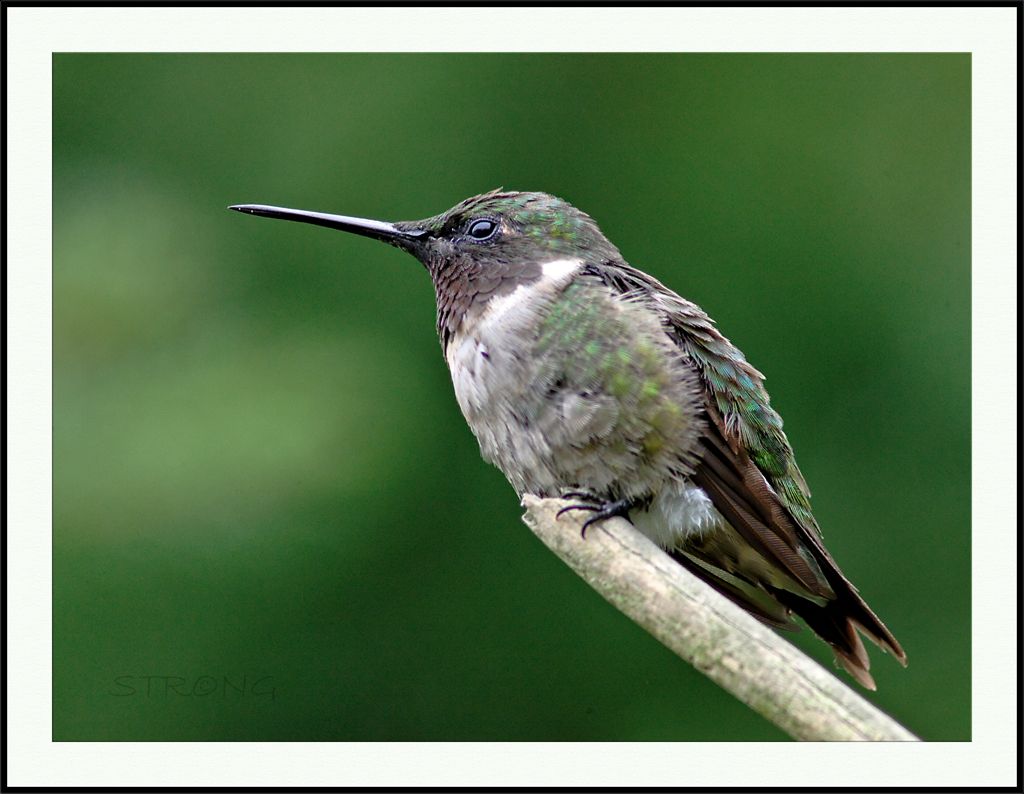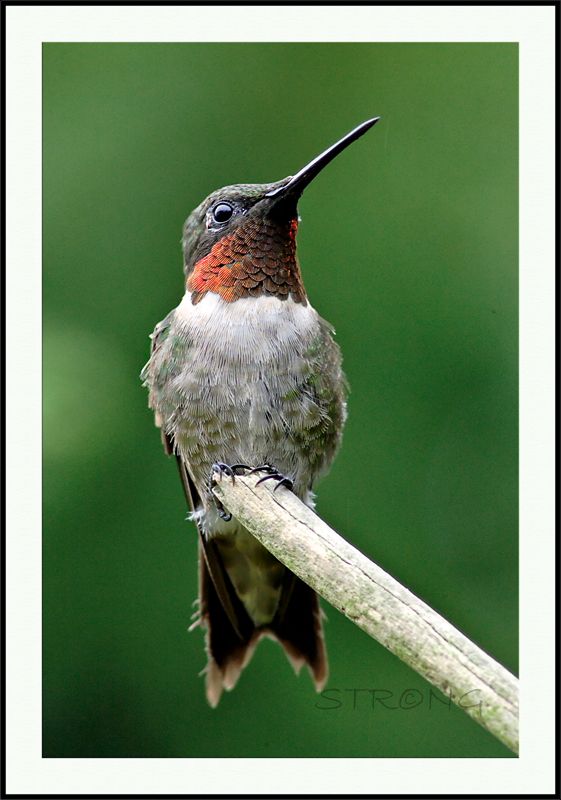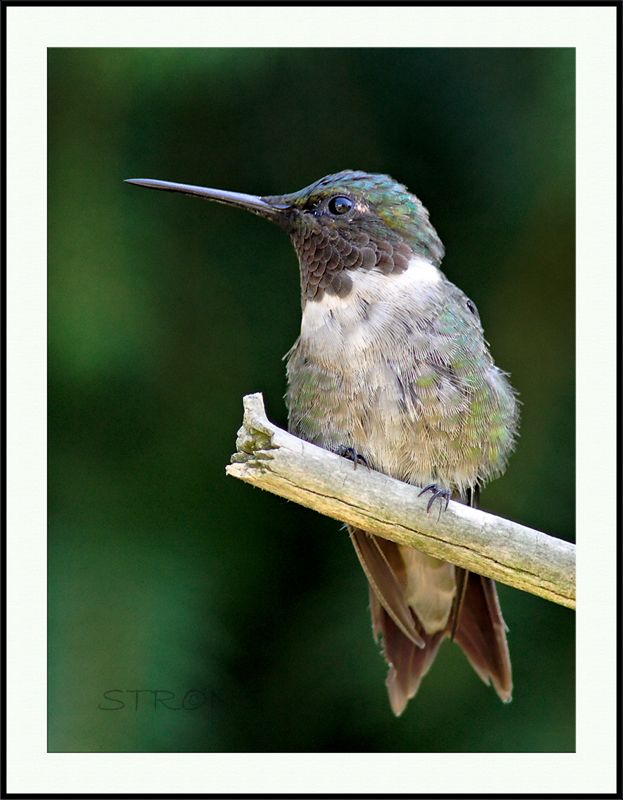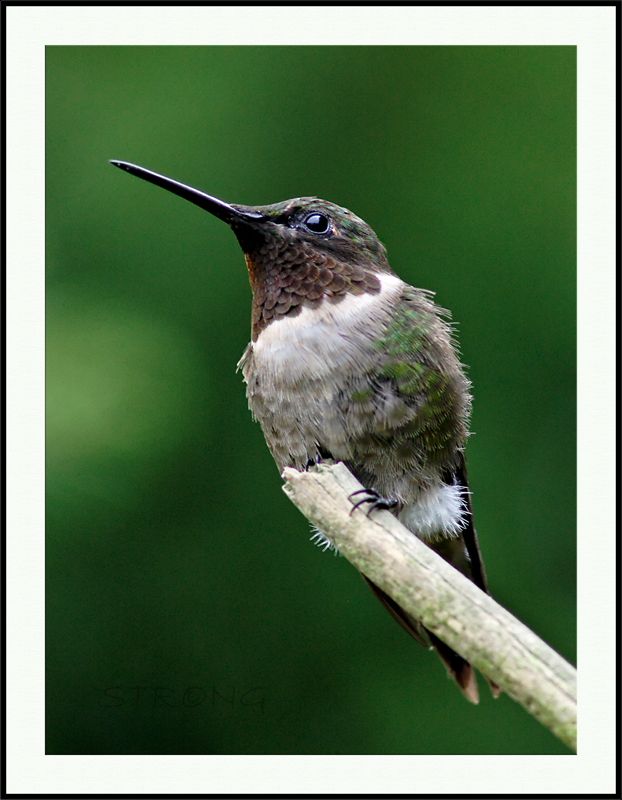 Helpful Posts: 0
Helpful Posts: 0
Results 1 to 8 of 8
Thread: A few new looks.................
-
18th August 2012, 08:43 PM #1

- Join Date
- Aug 2009
- Posts
- 2,342
- Real Name
- Steve
A few new looks.................
-
18th August 2012, 08:47 PM #2

- Join Date
- Jul 2012
- Location
- Chicago, IL, USA
- Posts
- 803
- Real Name
- Gretchen
Re: A few new looks.................
I actually like the blurred background in these. It helps bring out the green on his white belly area and increases the 3D of his body. He looks very real, not flat. I especially like the lighting on his neck on the second one!
-
18th August 2012, 09:20 PM #3

- Join Date
- Aug 2009
- Posts
- 2,342
- Real Name
- Steve
Re: A few new looks.................
Thanks gretchen. They can flash the color on their necks any time they want. I think the lighting is the same, he just flashed his neck colors.
A little trivia on hummingbirds..............
Hummingbird Facts
Here are some interesting hummingbird facts and general information about hummingbirds.
•Hummingbirds are the tiniest birds in the world.
•Hummingbirds can flash their bright colors, as well as hide them when needed.
•The bright radiant color on hummingbirds comes from iridescent coloring like on a soap bubble or prism.
•A Gorget is the bright flashing colored feathers of the hummingbird's neck.
•A hummingbird's brain is 4.2% of its body weight, the largest proportion in the bird kingdom.
•Hummingbirds are very smart and they can remember every flower they have been to, and how long it will take a flower to refill.
•Hummingbirds can hear better than humans
•Hummingbirds can see farther than humans.
•Hummingbirds can see ultraviolet light.
•Hummingbirds have little to no sense of smell.
•A hummingbird will use its tongue to lap up nectar from flowers and feeders.
•A hummingbird's tongue is grooved like the shape of a "W".
•Hummingbirds have tiny hairs on the tip of the tongue to help lap up nectar.
•A hummingbird's beak is generally shaped like any other bird beak, just longer in proportion to its body.
•The edges of the hummingbird's top beak will overlap the edges of the hummingbird's bottom beak.
•A hummingbird's bottom beak is slightly flexible.
•Hummingbirds do not drink though their beaks like a straw. They lap up nectar with their tongues.
•A hummingbird's heart beats up to 1,260 times per minute.
•A Hummingbird's heart beats about 250 times per minute at rest.
•A hummingbird's heart is 2.5% of the total body weight.
•A hummingbird will take about 250 breaths per minute while at rest.
•A hummingbird's metabolism is roughly 100 times that of an elephant.
•Hummingbirds have very weak feet and can barely walk. They prefer to fly.
•Hummingbirds like to perch.
•Hummingbirds spend most of their life perching.
•The hummingbird's body temperature is around 107 degrees Fahrenheit.
•Hummingbirds are on average 8.5 centimeters long from the tip of the beak to the tip of the tail.
•A hummingbird can weigh anywhere between 2 and 20 grams.
◦A penny weighs 2.5 grams
•30% of a hummingbird's weight consists of flight muscles
◦Humans pectoral muscles are about 5% of body weight
•Female hummingbirds are usually larger than male hummingbirds.
•An average sized hummingbird will have about 940 feathers.
•Females find iridescent feathers attractive.
•Hummingbirds do not mate for life.
•Male hummingbirds do not help raise the young.
•Female hummingbirds do all the nest building.
•A hummingbird baby is generally smaller than a penny.
•Females will lay a clutch of two eggs.
•Baby hummingbirds cannot fly.
•Baby hummingbirds will remain in a nest for three (3) weeks.
•Most hummingbirds die in the first year of life.
•Hummingbirds have an average life span of about 5 years.
•Hummingbirds can live for more than 10 years.
•The oldest known hummingbird was a Broad-Tailed Hummingbird that was captured and tagged 12 years apart.
•Male hummingbirds are very aggressive and will chase another male hummingbird out of its territory.
•A hummingbird wings will beat about 70 times per second.
•Hummingbird's wings will beat up to 200 times per second when diving.
•Hummingbirds are the only birds that can fly both forward and backwards.
•Hummingbirds can also hover in mid-air, fly sideways and even upside-down.
•A hummingbird can fly an average of 25-30 miles per hour.
•A hummingbird can dive up to 60 miles per hour.
•A hummingbird's wings will rotate in a full circle.
•Ruby-Throated Hummingbirds have been known to travel 500 miles over the Gulf of Mexico to breeding grounds.
•It is estimated that a Ruby-Throated Hummingbird takes about twenty (20) hours to fly across the Gulf of Mexico.
•Some hummingbirds will travel over two-thousand (2,000) miles twice a year during migration times.
•The Rufous Hummingbird travels the farthest north of any other hummingbird during migration. All the way from Mexico to Alaska.
•Hummingbird DO NOT migrate on the backs of geese.
◦Geese fly on different migration paths or fly-zones than hummingbirds do.
•Hummingbirds need to eat on average 7 times per hour for about 30-60 seconds.
•A hummingbird can eat anywhere from half (1/2) to eight (8) times its body weight a day.
•A hummingbird will visit an average of 1,000 flowers per day for nectar.
•Hummingbirds eat small soft bugs for protein.
•A hummingbird will lap up nectar at a rate of about 13 licks per second.
•Hummingbirds can double his/her weight before migration.
•Hummingbirds will not get addicted to a hummingbird feeder filled with nectar. The hummingbirds will leave when they need to.
•When hummingbirds sleep at night, they go into a hibernation-like state called torpor.
•Hummingbirds enter torpor to conserve energy.
•When a hummingbird goes into torpor, their metabolic rate is one-fifteenth (1/15) of normal sleep.
•Torpor can save up to 60% of a hummingbird's available energy.
•When in torpor, and hummingbirds heart rate can drop to as few as 50 beats per minute.
•During torpor, a hummingbird can lower the body temperature to as low as 70 degrees Fahrenheit.
•When hummingbirds go into torpor, they will appear as if they are dead and have occasionally been found to be hanging upside-down.
•It can take up to an hour for a hummingbird to fully recover from torpor.
•Torpor can be fatal to a weak hummingbird.
•Hummingbirds are only found naturally in the Americas.
•Hummingbirds are found as far north as Alaska.
•Hummingbirds are found as far south as Chile.
•Hummingbirds are the second largest family of birds in the Western Hemisphere.
•There are more than 300 types or species of hummingbirds.
•Most of the types or species of hummingbirds are found in South America.
•The county of Ecuador has the largest number of types or species of hummingbirds.
•There are more than fifty (50) types or species of hummingbirds that breed in Mexico.
•There are more than fifteen (15) types or species of hummingbirds that breed in the United States.
•There are more than three (3) types or species of hummingbirds that breed in Canada.
•Hummingbirds are all part of the Trochilidae family of birds.
•Trochilidae is from the Greek trochilos, meaning small bird.
•There are two sub-families of hummingbirds:
◦Typical hummingbirds
◦Hermit hummingbirds
•Most hummingbird types or species do not migrate
•The smallest hummingbird is the Bee Hummingbird.
•The largest hummingbird is the Giant Hummingbird.
•White hummingbirds (or albino hummingbirds) are not a separate hummingbird type or species. They are regular hummingbirds that never developed color in their plumage.
•Hummingbirds don't really sing, they chirp.
•A hummingbirds favorite color is red
•Hummingbirds like tubular types of flowers the most.
•Hummingbirds pollinate flowers by rubbing their forehead and face in each flower as they get the nectar.
•Many plants depend on hummingbirds for pollination.
•Hummingbirds get their name from the humming sound produced by their wings when flying.
•Early Spanish explorers called hummingbirds flying jewels.
-
18th August 2012, 11:40 PM #4
Re: A few new looks.................
Wow Steve! That is a lot of hummingbird specific facts! Thank you for the background information. I was surprised to find that the Ruby Throated Hummingbird can fly across the Gulf of Mexico in just 20 hours!
When I checked the Web I was able to determine that some hummingbirds are much larger than others...

I'm not sure I believe 'everything' I see on the Web.....
-
18th August 2012, 11:55 PM #5
Re: A few new looks.................
Beautiful images, wonderful information. Nice work Steve.
-
19th August 2012, 04:21 AM #6

- Join Date
- Aug 2009
- Posts
- 2,342
- Real Name
- Steve
-
19th August 2012, 04:22 AM #7

- Join Date
- Aug 2009
- Posts
- 2,342
- Real Name
- Steve
-
19th August 2012, 05:36 AM #8

- Join Date
- Apr 2011
- Location
- Ontario (mostly)
- Posts
- 6,667
- Real Name
- Bobo
Re: A few new looks.................
Again a whole set of really wonderful images.
I may get an opportunity to grab shots in the wild. Any suggestions to add to the wonderful tutorial you did earlier?








 Reply With Quote
Reply With Quote
